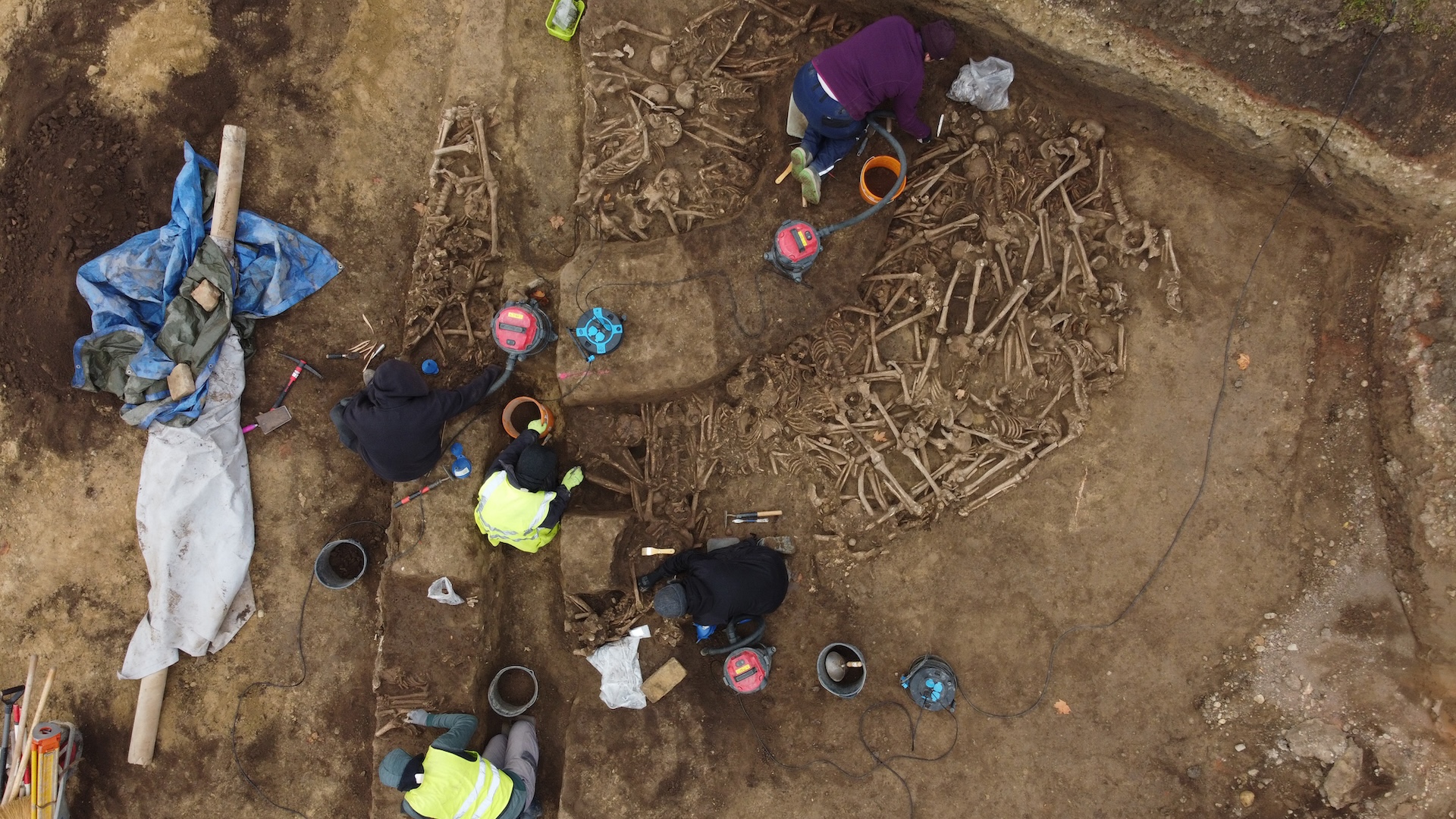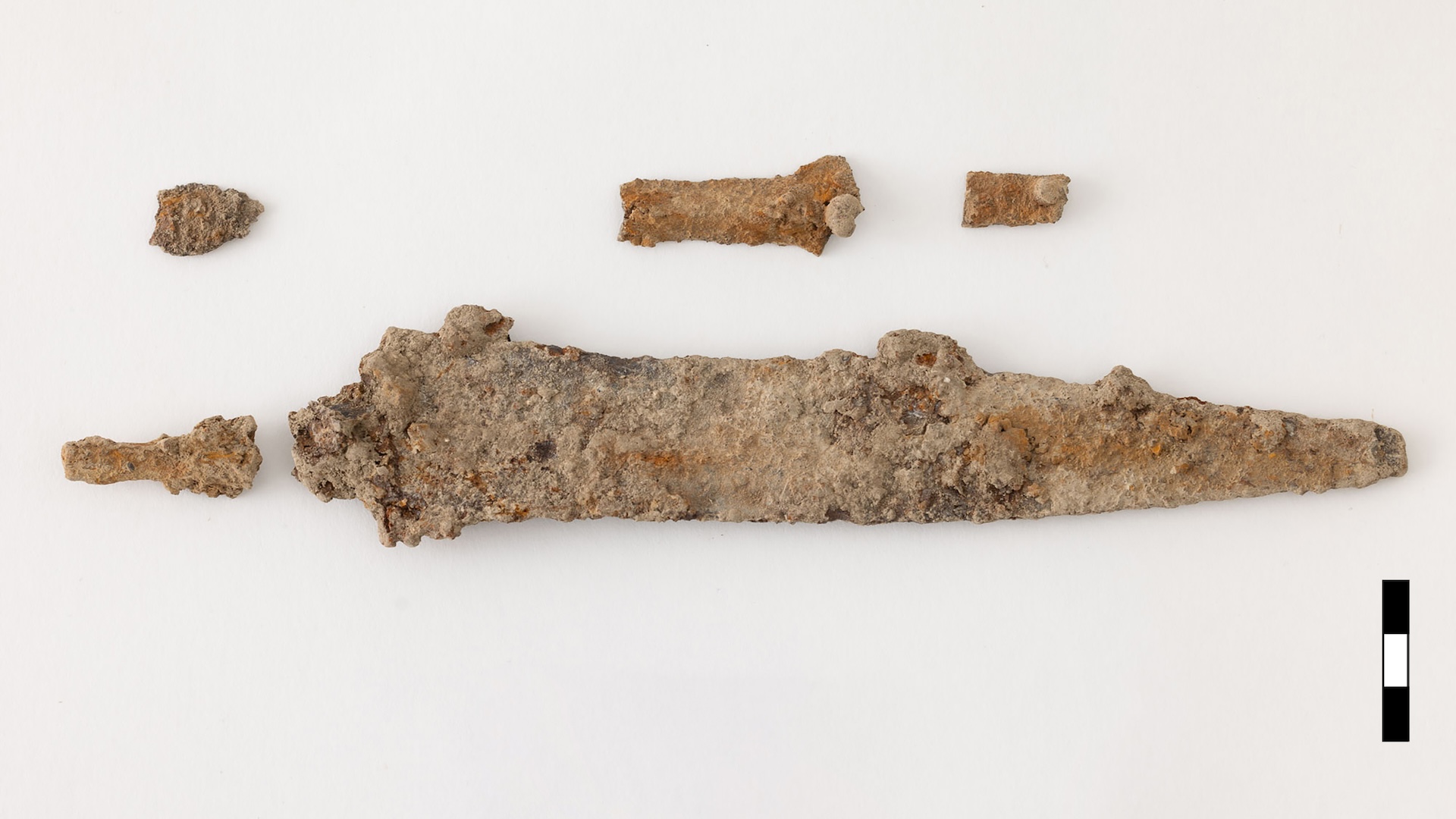During routine renovations of a Vienna soccer field in October, construction crews stumbled upon an astonishing find: an ancient mass grave filled with intertwined skeletal remains, from what were clearly dozens of bodies. This discovery became even more noteworthy when archaeologists dated the bodies back to the first-century Roman Empire.

The mass burial, likely the result of a violent clash between the Romans and Germanic tribes, has been analyzed by experts from Stadtarchäologie Wien (Vienna City Archaeology) in collaboration with the private firm Novetus GmbH. Following months of study, experts from the Vienna Museum have now publicly unveiled their findings, linking the site to a catastrophic military conflict—the first known ancient battle ever recorded in this region.
Located in Vienna’s Simmering district, the mass grave contains the confirmed remains of 129 individuals. However, archaeologists believe that the total number of victims exceeds 150 due to the jumbling of many bones, making this an unprecedented discovery in Central Europe. Lead archaeologist Michaela Binder acknowledged the rarity of finding fallen fighters in such a context, stating, “Within the context of Roman acts of war, there are no comparable finds of fighters. Finding the dead, that is unique for the entire Roman history.”

Ancient Vindobona, the Roman military outpost that later became modern Vienna, had a sizeable Roman presence. Yet, the mass grave is extraordinary, as Roman funerary practices in this period primarily involved cremation. Kristina Adler-Wölfl, head of the Vienna City Archaeology Department, emphasized this rarity: “In the Roman Empire, there were strict burial rituals and precise rules had to be observed even for the time after death.” As body burials were an absolute exception, this find provides significant insight into Roman practices.
Preliminary analysis indicates that the skeletons belong exclusively to young men, aged between 20 and 30. The average height exceeds 1.7 meters, and the remains exhibit strong overall health with well-preserved teeth and minimal signs of disease. However, the violent circumstances of their deaths stand out: they suffered grievous wounds inflicted by weapons such as spears, daggers, swords, and crossbow bolts.

The chaotic positioning of the remains suggests a hurried mass interment following a brutal confrontation. This implies that the battle was swift and devastating, likely overwhelming the soldiers involved, forcing them to dispose of their fallen comrades quickly and without ceremony. Among the military artifacts recovered from the burial site were a dagger, helmet fragments, spearheads, and more, painting a vivid picture of the conflict.
This grave provides the first physical evidence of battle along the Danube Limes, the northern frontier of the Roman Empire. Previous knowledge stemmed solely from historical texts, recounting frequent skirmishes between Roman legions and Germanic tribes during the late first century AD. Archaeologist Martin Mosser indicated that this find could reshape our understanding of the military history of the region and the development of Vindobona as a crucial Roman stronghold.
The discovery is set to trigger an extensive international research project. Studies will include DNA and isotope analyses to uncover the soldiers’ origins and assess their lives before meeting their untimely deaths. Curator Michaela Kronberger conveyed excitement regarding future research, announcing the potential for new revelations concerning Roman history in this region.
As scientists continue their analysis, this mass grave promises to unveil new insights into Roman-era warfare, troop movements along the empire’s borders, and the violent conflicts that shaped Vienna’s early history.